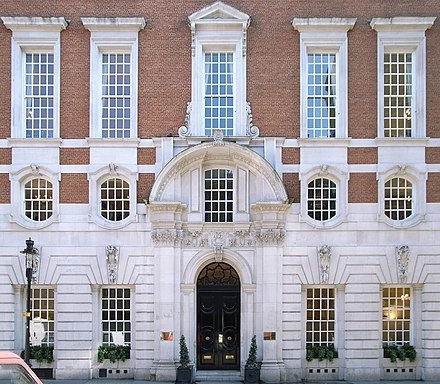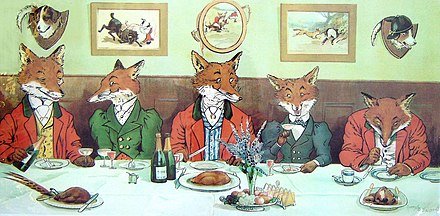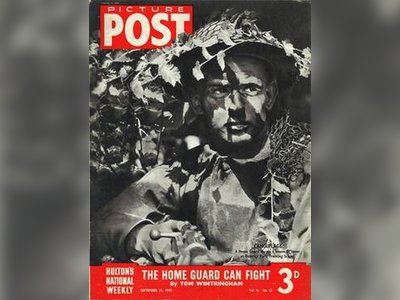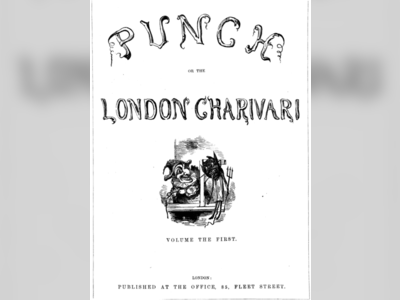British Heritage
Remember, Cherish, Learn.
beta
Country Life (magazine)
A Pillar of British Heritage.
Country Life, a quintessentially British magazine, stands as a stalwart testament to Britain's enduring love for its pastoral landscapes, architectural splendours, and time-honoured traditions. First published in 1897, the magazine’s rich chronicles provide an invaluable window into the nation's rural heart and high society, underscoring its significant contributions to the British heritage.
Originally published under the aegis of Edward Hudson, owner of Lindisfarne Castle, Country Life was a beacon of country pursuits, embracing the world of racing and golf. It garnered a reputation for its in-depth coverage of manorial estates, fostering an appreciation for Britain's majestic countryside and architectural legacy. This fervour for architecture and property has been an abiding cornerstone of the magazine, with its focus on country house architecture persisting even at times when mainstream architectural press overlooked these homesteads.
Over the years, Country Life broadened its scope, delving into a plethora of subjects encompassing gardens, fine art, books, rural issues, luxury products, and interiors. This diversity helped it earn the affection of countless readers, including prominent figures like Elizabeth Bowes-Lyon, the late Queen Mother, who appeared frequently on its covers.
Each issue of Country Life opens with the alluring frontispiece – a portrait of a woman or occasionally a man of society, serving as a nod to the genteel customs of the British elite. The magazine's heart, however, is its unflinching focus on rural life and country pursuits. From hunting and shooting to farming, gardening, and equestrian news, Country Life paints a vibrant picture of Britain’s countryside and the diverse communities that populate it.
The magazine has earned its place as a guide for the high-end real estate market. Its opening pages, traditionally dedicated to the advertising of upmarket residential property, have become a signature feature, providing a glimpse into the lavish lifestyles associated with country living. Further adding to its prestige are regular sections dedicated to luxury, interiors, art, and architecture, offering insights into everything from jewellery and style to travel and interiors.
Country Life has continually made its mark on British cultural heritage. In 1997, it celebrated its centenary with a special issue, a book by Sir Roy Strong, a BBC2 TV programme, and a Gold Medal-winning garden at the Chelsea Flower Show. It had the honour of Charles, Prince of Wales, guest-editing an issue in 2013, and in 2015, it revealed the true face of Shakespeare, a historic revelation that captivated audiences worldwide. These milestones, along with many others, underscore Country Life's engagement with British culture and history.
Today, Country Life remains relevant, navigating the complexities of modern rural life and issues. It continues to provide an intimate portrayal of the countryside, its beauty, traditions, and challenges faced by landowners, farmers, and those involved in country pursuits. The magazine's ethos was beautifully encapsulated in the 2016 BBC2 documentary series, 'Land of Hope and Glory, British Country Life,' which spotlighted elements of modern rural life featured in the magazine, rarely seen in the mainstream media.
Country Life's enduring success lies in its commitment to celebrating Britain's rural heritage and aristocratic customs. It provides a unique narrative of Britain's past, present, and future, told through the prism of country houses, gardens, and lifestyle, thereby contributing to our understanding of British identity. It is more than a mere magazine; it is a cultural artefact and an indispensable part of British heritage.
Its extensive photographic archive of country estates, architectural treasures, and figures of high society has become an invaluable resource for architectural historians. Moreover, its blend of tradition and modernity is reflective of the British ethos, a testament to its timelessness.
To conclude, Country Life, with its century-long commitment to capturing the essence of British countryside and high society, has solidified its position as a pillar of British heritage. Its steadfast dedication to rural issues, architectural magnificence, and the genteel customs of the country's elite has not only entertained and informed its readers but has played a significant role in shaping the world's understanding of British rural life and culture.
1. Historical Overview
Originally published under the aegis of Edward Hudson, owner of Lindisfarne Castle, Country Life was a beacon of country pursuits, embracing the world of racing and golf. It garnered a reputation for its in-depth coverage of manorial estates, fostering an appreciation for Britain's majestic countryside and architectural legacy. This fervour for architecture and property has been an abiding cornerstone of the magazine, with its focus on country house architecture persisting even at times when mainstream architectural press overlooked these homesteads.
Over the years, Country Life broadened its scope, delving into a plethora of subjects encompassing gardens, fine art, books, rural issues, luxury products, and interiors. This diversity helped it earn the affection of countless readers, including prominent figures like Elizabeth Bowes-Lyon, the late Queen Mother, who appeared frequently on its covers.
2. Iconic Features and Content
Each issue of Country Life opens with the alluring frontispiece – a portrait of a woman or occasionally a man of society, serving as a nod to the genteel customs of the British elite. The magazine's heart, however, is its unflinching focus on rural life and country pursuits. From hunting and shooting to farming, gardening, and equestrian news, Country Life paints a vibrant picture of Britain’s countryside and the diverse communities that populate it.
The magazine has earned its place as a guide for the high-end real estate market. Its opening pages, traditionally dedicated to the advertising of upmarket residential property, have become a signature feature, providing a glimpse into the lavish lifestyles associated with country living. Further adding to its prestige are regular sections dedicated to luxury, interiors, art, and architecture, offering insights into everything from jewellery and style to travel and interiors.
3. A Cultural Artefact
Country Life has continually made its mark on British cultural heritage. In 1997, it celebrated its centenary with a special issue, a book by Sir Roy Strong, a BBC2 TV programme, and a Gold Medal-winning garden at the Chelsea Flower Show. It had the honour of Charles, Prince of Wales, guest-editing an issue in 2013, and in 2015, it revealed the true face of Shakespeare, a historic revelation that captivated audiences worldwide. These milestones, along with many others, underscore Country Life's engagement with British culture and history.
4. Role in Contemporary Times
Today, Country Life remains relevant, navigating the complexities of modern rural life and issues. It continues to provide an intimate portrayal of the countryside, its beauty, traditions, and challenges faced by landowners, farmers, and those involved in country pursuits. The magazine's ethos was beautifully encapsulated in the 2016 BBC2 documentary series, 'Land of Hope and Glory, British Country Life,' which spotlighted elements of modern rural life featured in the magazine, rarely seen in the mainstream media.
5. Legacy and Contribution to British Heritage
Country Life's enduring success lies in its commitment to celebrating Britain's rural heritage and aristocratic customs. It provides a unique narrative of Britain's past, present, and future, told through the prism of country houses, gardens, and lifestyle, thereby contributing to our understanding of British identity. It is more than a mere magazine; it is a cultural artefact and an indispensable part of British heritage.
Its extensive photographic archive of country estates, architectural treasures, and figures of high society has become an invaluable resource for architectural historians. Moreover, its blend of tradition and modernity is reflective of the British ethos, a testament to its timelessness.
To conclude, Country Life, with its century-long commitment to capturing the essence of British countryside and high society, has solidified its position as a pillar of British heritage. Its steadfast dedication to rural issues, architectural magnificence, and the genteel customs of the country's elite has not only entertained and informed its readers but has played a significant role in shaping the world's understanding of British rural life and culture.
- Country Life (magazine)en.wikipedia.org







